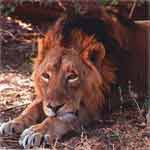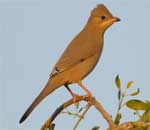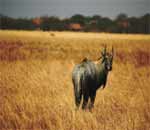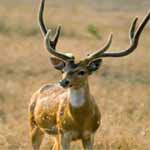INTRODUCTION

LOCATION
The Gir National Park is situated in the Gujarat state along the south-west border of the Saurashtra Peninsula. It is flanked by three unique reserves namely the Nalsarovar Lake and Sanctuary; the Rann of Kutch and the Flamingo Islands.BEST TIME TO VISIT GIR FOREST

However people who are interested in wildlife keep travelling to the park any time.
ATTRACTION
FLORA

FAUNA

AVIFAUNA
The Gir National Park is also very suitable for a large number of bird species with its ideal climate and number of excellent water bodies. Some of the bird species seen here are Paradise Flycatchers, Black headed Cuckoo Shrike, Gray Drongo, Pied Woodpeckers, Coppersmiths, Indian Rollers, Crested Swifts, Fish Owls, Black Vultures, Shaheen Falcons, Bonelli's Eagles, Flamingo, Crested Serpent Eagles, Painted Sandgrouse, Rock Bush Quail, Gray Partridge, Painted Storks and White Necked Storks.REPTILES
The reptile population of the park is mainly represented by Marsh Crocodiles, Monitor Lizards, Pythons and a large variety of snakes. There is an interesting breeding farm for crocodile at Sasan, which also provides the specimens that are relocated into the water reservoirs inside Gir.
OTHER ATTRACTIONJEEP SAFARIJeep safaris are undertaken during the early morning hours till evening. A forest department guide is always their with the visitors on these jeep trips taken inside the park. There is a fixed entry and exit time into the forest. The Jeep Safari in Gir Wildlife Sanctuary takes you through the open grasslands, ruins of Wilderness and other forested areas where you can spot wild animals near these places.JUNAGADHJunagadh is a place very famous in the Gir area for its tribal population. A couple of tribes still reside inside the park co-existing with the wild animals. A visit to these tribal villages is an interesting experience that introduces the visitors to the unique lifestyle and ways of living of the tribal people. The other nearby places which can be visited from Dudhwa National park is Lucknow at a distance of about 182kms and Delhi and its neighboring places.ACCOMMODATION AND EAT OUTS•Though there are not many places for accommodation in this area some of the few present here seems to cater to the needs of the visitors coming here.•Sinh Sadan Guest House - This is run by the Gujarat Tourism board along with a hotel. •The Gir Lodge, Gir •Hotel Maneland Jungle Lodge, Sasan Gir Lion Safari Camp |
Travel Guide
Travel Information
| |||||||||||||||||||||||||||||||||||||||
GETTING THERE
BY AIR
The nearest airport from Gir is Keshod 90-kms via Veraval. Visitors can easily catch daily flights from Mumbai to Keshod.BY RAIL
The nearest rail connection is the meter gauge rail line of 395-kms from Ahemdabad.BY ROAD
Gir is situated at a distance of 400-kms from Ahmedabad via Rajkot, Junagadh and Mendarda. State Transport buses are easily available from Junagadh and Veraval to Gir, between November and June.- Send your feedback / Change Request by using this link.
- List your Hotel / Travel Agency with Photos in this web page .



